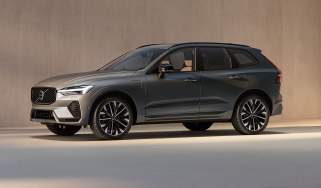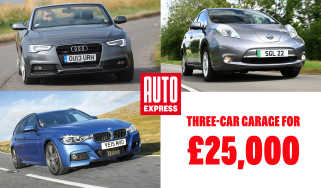Cool cars: the top 10 coolest cars in the world revealed
Our cool cars poll has revealed the top 10 coolest cars in the world according to you. And here they are…
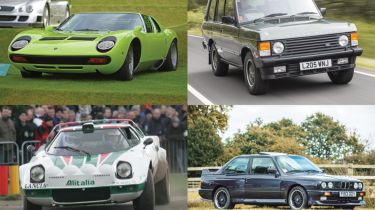
7. Lotus Espirit
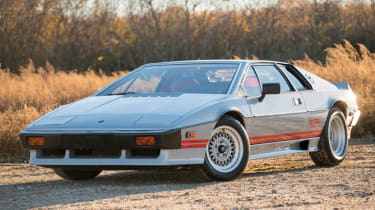
The Lotus Esprit encapsulated seventies cool with a little help from 007
Years: 1976-2004Number built: 10,675
One sure-fire way to earn cool status is to be cast alongside James Bond in the 007 movies. In fact, the Lotus Esprit was cool enough to appear in two movies, and this was well before the days when product placement meant you could buy your way on to the silver screen (hello Ford!).
Sure, the Aston Martin DB5 from Goldfinger is the more famous Bond car, and is synonymous with Britain's most famous secret agent, but that's the obvious choice, so it's not as inherently cool as the Esprit. And besides, the DB5 didn't turn into a submarine at the push of a button…
• Best James Bond cars and gadgets
There was much more to the Esprit than simply being spy transport. Its wedge shape was pure concept car, the work of Italian styling master Giorgetto Giugiaro, with a low-slung body and typical mid-engined supercar layout. Unfortunately, that engine bay only housed a 162bhp 2.0-litre four-cylinder engine, although the later Esprit Turbo did redeem itself somewhat with 211bhp, and finally 217bhp in Turbo HC guise.
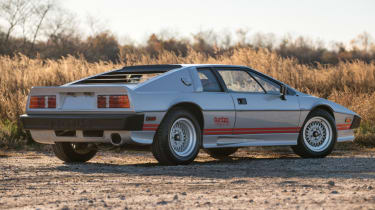
A redesign in 1987 saw Giuigaro's decidedly retro-looking wedge replaced by a curvier body designed by Peter Stevens. Four-cylinder power remained, while the Esprit's parts-bin character only added to its coolness. Look closer, and you'd find door handles from the Austin Allegro and then the Vauxhall Calibra were used, the side mirrors were from the Citroen CX, and the tail-lights were the same as the Fiat X1/9, and later the Rover SD1. There were more scavenged parts under the skin, and over time the Esprit used a Citroen gearbox, a Vauxhall Omega alternator, Opel Ascona suspension parts, and the fuel pump from a Renault Fuego.
One aspect of the Esprit that stuck true to other Lotus models like the Elan and Seven was its commitment to lightweight. The steel frame chassis was clothed in lightweight fibreglass bodywork, while the small engine meant overall kerb-weight was reined-in to under a tonne - about the same as a Ford Escort of the time, but with more than twice the power.

It was only towards the end of its life that the Esprit got the engine it deserved, as the Esprit V8 was a direct result of the car's competition appearance in the fledgeling GT1 sportscar championship. This 500bhp 3.5-litre twin-turbo V8 was more like the kind of motor you'd find in a Ferrari than a Ford, as its flat-plane crank meant it screamed rather than rumbled, and it gave the Esprit a 0-62mph time of 4.3 seconds.
By the time production of the Esprit came to a halt in 2004, it had become an established supercar, although low sales volumes have ensured its exclusivity. As for a successor to the Esprit, well, we're still waiting. Lotus has stumbled from pillar to post with different owners and financial difficulties, but with the demand for exclusive supercars showing no signs of waning, and new ownership of parent firm Proton by Chinese maker Geely, it can only be a matter of time before an all-new Esprit hits a motor show stand. Who knows, it could even be cast as Bond's next company car...
8. Porsche 911
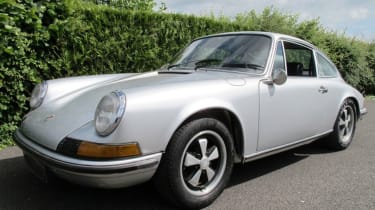
The driver’s choice in the cool cars list, the Porsche 911 is an icon of design and engineering
Years: 1963-1989Number built: 311,000
Few cars deliver the kind of cool factor that the Porsche 911 can, which is part of the reason why it has evolved into the car that's on sale today, while outlasting its contemporaries and the models designed to replace it. The rear-engine layout gave the original 911 a reputation for tricky handling, and there is nothing cooler than seeing an original 911 being hustled along a twisty road by a driver that knows how to deal with the limits of the car's handling. Add-in its numerous racing and rally successes, and a host of celebrity owners, and the 911's place on our list is cemented.
The original Porsche 911 was the replacement for the ageing VW Beetle-based 356, but initially, it wasn't even known as the 911. A trademark dispute with Peugeot, which claimed it had the rights to numbering cars in three digits with a zero in the middle, saw the original 901 name switched to 911, and a legend was born, although the handful of 901-badged '911s' that were sold before the name change are among the most collectable versions of all.
• Ultimate Porsche 911 Targa test
What the 911 carried over from the 356 was its rear-engined layout and air-cooled engine, although it had grown to 2.0-litres and 128bhp. That wasn't too much to get into trouble, but power soon increased with subsequent 911S, Carrera and 2.7-litre flat-six models.
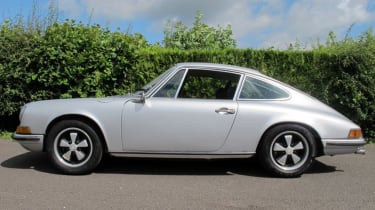
Among the most collectable of these models is the Carrera RS. RS stands for Rennsport, 'racing sport' in German, and was a special model designed to qualify the 911 for competition. Over the years, the 911 spawned a host of competition variants, and one of the most successful was the 935. This was arguably the pinnacle of the 911's racing heritage, as it even won the Le Mans 24 Hours outright in 1979.
That competition history established the 911 as the roadgoing sports car of choice for people who enjoyed driving, while the flat-six engine could be directly associated with Porsche's motorsport success. That can be even more closely associated with the later 911 Turbo of 1974. This was the car, internally known as the Porsche 930, which cemented the 911's status as a tricky car to handle. Easily identified by the big rear wing on the back, the 911 Turbo featured up to 300bhp, but that rear-engined layout and the delayed power delivery as the turbocharger kicked in meant the unwary could find the rear end of the car catching up with the front all too quickly.
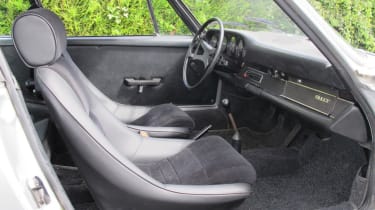
Still, this seemed to build on the 911's reputation, and while Porsche introduced the front-engined 928 as a replacement for the 911, buyers still wanted the original machine. So the 911 evolved in 1989 into the 964, which updated the looks, and the 993 in 1994, which featured a new chassis and a more modern interior. Then came the water-cooled 996, 997 and current 991 series, and while these cars moved further away from the original concept, they all still wear the 911 badge with pride, and look and drive unlike any other sports car on sale today.


